Somik synodontis is an unusual shifter fish, the birthplace of which is the African Republic of Cameroon. This representative of the family of pinnate is distinguished by its peaceful nature and interesting habits, has an elegant appearance and is unpretentious in content. Because of this, many aquarists prefer these underwater inhabitants to other fish.
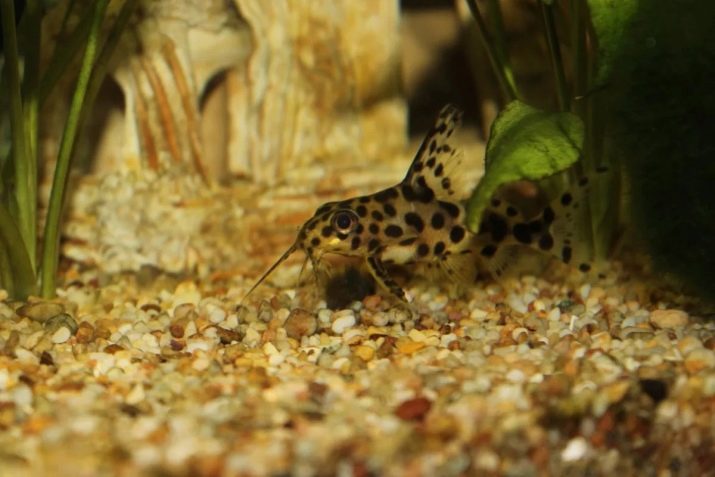
View description
The catfish-changeling is a flock animal, usually up to 5-8 individuals get along well in an aquarium. In synodontis, a naked body without scales, protected by fins with sharp spikes and covered with mucous secretions, reaches a length of 15-30 cm, so for home keeping it is a rather large fish. Also, the catfish has three pairs of antennae, which are located in the lower part of the large head and resemble fringe. The body and head of the animal may have a light, gray and dark brown or black color.
As a rule, specks of various shades are present on the sides and back. The exception is the abdomen, devoid of any pattern.
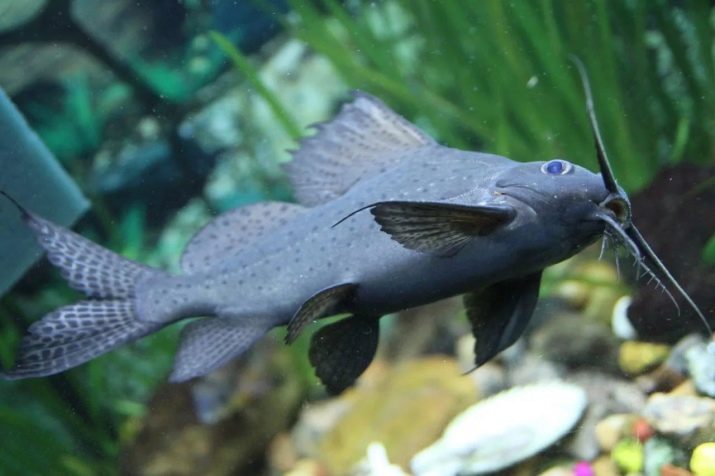
The fish has a calm, balanced character, always busy with their own affairs. In the daytime, catfish are mostly passive, they like to hide in the thickets of plants and all kinds of shelters of the bottom of the aquarium. At night, the fish usually liven up, become mobile and take active walks around their home in search of food.
Some habits of a pinnate water inhabitant are interesting - the catfish turns upside down, swims with pleasure and rests in this position for a long time.By the way, other species also prefer an inverted state, in which they spend most of their lives, for this reason the fish were called changeling.
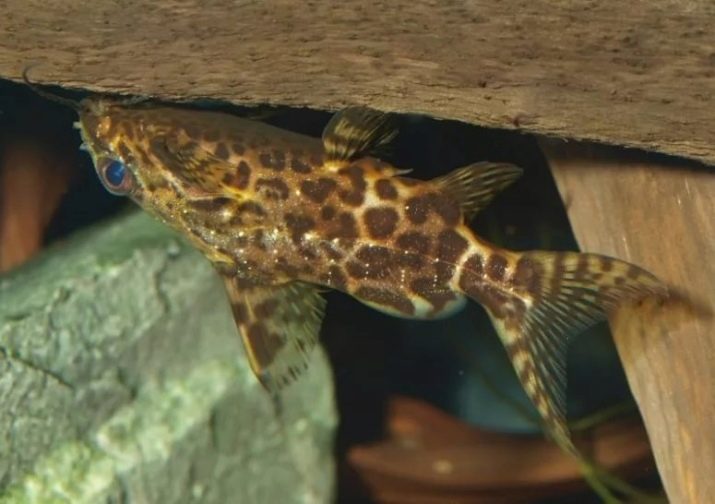
Despite the peaceful disposition, werewolves can be aggressive when it comes to other applicants to their territory. If you let fish into the aquarium who also like to spend time digging in the ground, then catfish can react very harshly to their presence. Since catfish are able to find the remains of organic matter in the most inaccessible places, the aquarium always remains clean. Cirrus can be kept together with other species, most often it is a combination with African cichlids. It’s not safe to settle small fish nearby, since during night hunting the changeling can attack and swallow it. At home, with proper feeding and care, aquarium catfish can live up to 10-15 years or more, while in nature their age does not exceed 5 years. However, if you do not take care of your fish, they will hardly reach 1-2 years.
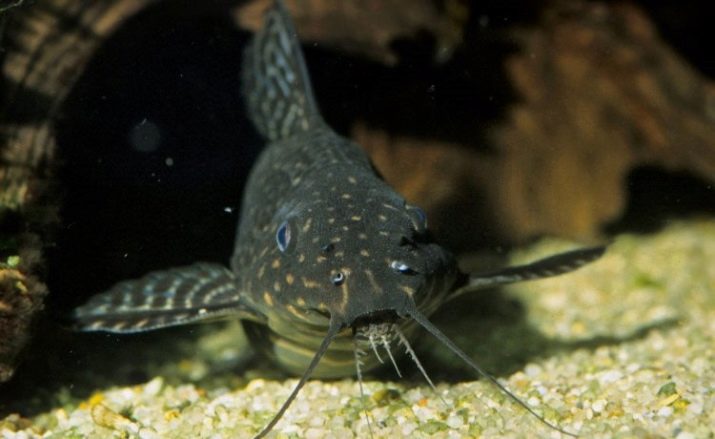
Varieties of synodontis
The African Changeling catfish, which lives at the mouth of the Congo and has a light brown color with a dark ornament, can usually grow up to 7-10 cm and has a life expectancy of up to 9 years. But, besides him, there are other decorative species of these fish, namely:
- veiled synodontis - a beautiful fish of dark coffee color with dark small spots and long fins fluttering in the water; the average size of individuals is 15–20 cm, the life span is about 9–10 years;
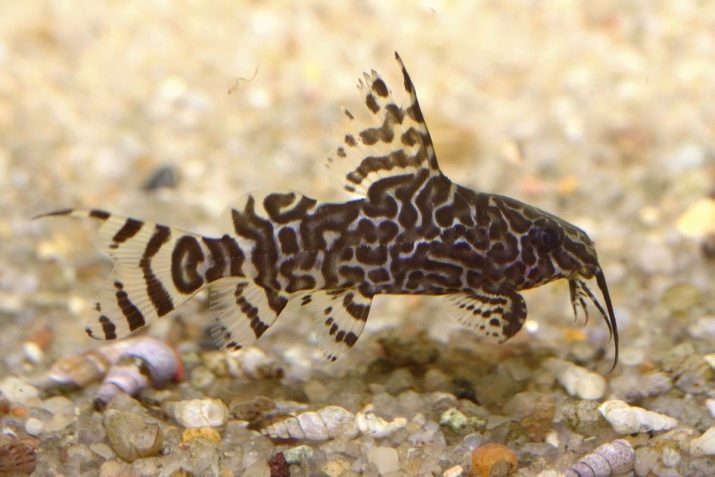
- flag catfish - an animal of gray color with large dark spots of various shapes; so named because of the fin on the back, whose beam is elongated like a flag, in good conditions can live 13-14 years and reach a size of 35 cm;
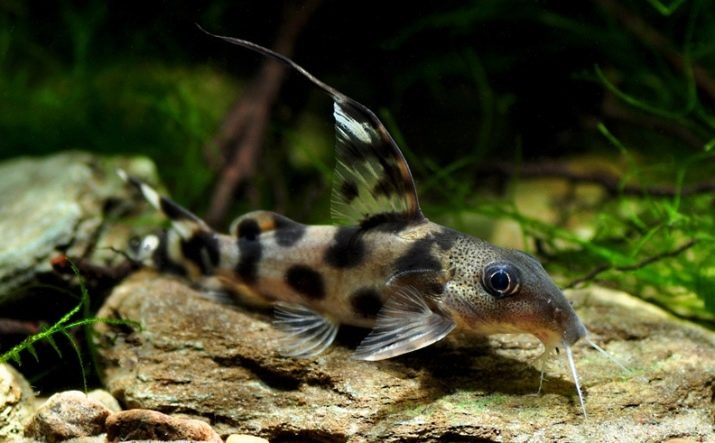
- speckled (dalmatian) - a fish 17-17 cm long, bright, beautiful, with a fringing of light and blue fins, life expectancy of 10-14 years;
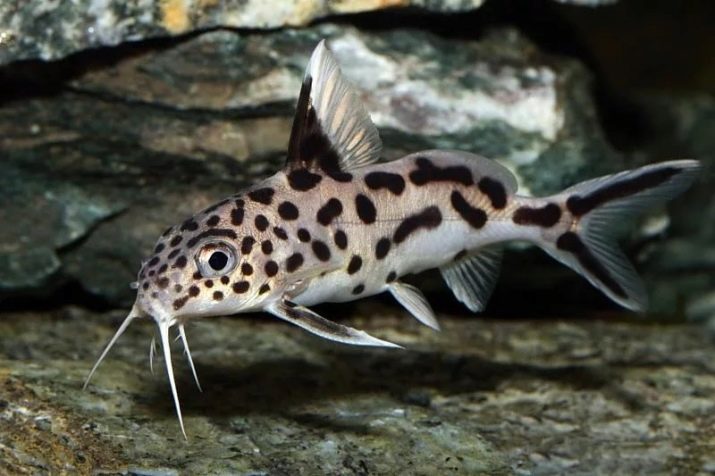
- star catfish, he is also called an angel - an extremely effective representative of pinnate catfish of coffee, purple color with bright red or golden marks on the body, the body length of males is 25 cm, these fish live up to 12-14 years.

There are other varieties of catfish, such as petricola, alberta, dominoes, showedena, leopard, harlequin, clown, and tartar. One can not stop at such an extraordinary underwater inhabitant as catfish.
Distinctive features of spotted catfish
Synodontis cuckoo catfish is a species found in rift, African freshwater lakes. Cuckoo fish was not called in vain, it has the habit of putting its eggs in the nests of different water inhabitants. Yes, and the color of the catfish resembles the color of the famous bird - its elongated yellow body is covered with black spots of various shapes. In males they are more saturated, and the body is slimmer than in females.
The difference in the appearance of the male from the female is in the form of the dorsal fin - in boys it is more pointed.
The catfish's skin is covered by the mucous layer, but small scales are present on it, which distinguish it from other, naked representatives of the species. And the fish has large round eyes that are located on both sides of the head, a wide mouth with antennae at the bottom. They help him navigate in space, including at night, when the animal is hunting. In length, representatives of the species can reach 12 cm, in their own way, they are long-livers, because their life span sometimes reaches 20 years.
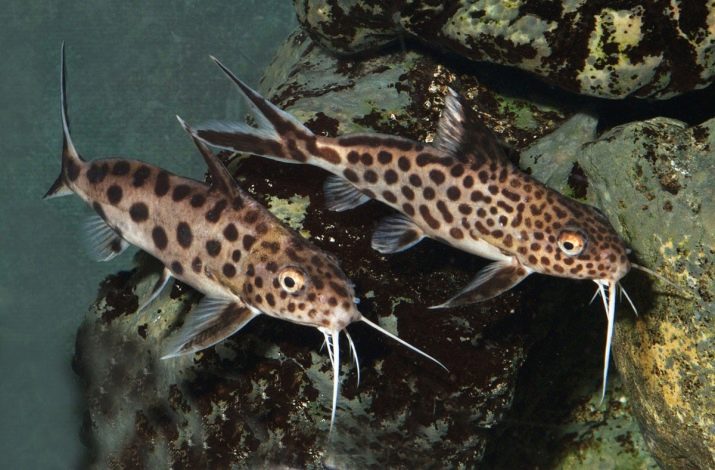
How to care?
The synodontis are unpretentious in the conditions of detention, but care for them involves the following requirements:
- the volume of the aquarium is calculated taking into account the size of the fish - for catfish 10 cm long - 50 l, individuals up to 15 cm - 80 l, with a trunk size of 20-25 cm - 150 l;
- the optimal number of individuals in one tank is 4–6, lonely fish behave inappropriately, they constantly hide and are too shy.Catfish feel more comfortable in the pack, with the exception of the catfish-sucker, which can be kept alone;
- animals need to equip several shelters that can be built from ceramic cups and pots, wooden driftwood or stones; the main thing is that the fish can move freely inside these mazes and minks, as well as swim out;
- vegetation, which is preferable to plant in the aquarium - tropical cryptocoryne bushes, creeping shoots of anubias, popular due to its unpretentiousness echinodorus; plants are best planted in pots, as catfish sometimes damage their roots;
- for cuckoo catfish, it is necessary to maintain the water temperature not lower than + 22– + 28 degrees, while it is important to adjust the acidity, which should be within 7–8 units;
- lighting for fish is irrelevant, because they spend the whole day in a passive state, and at night they walk and get food in the dark thanks to their mustache probes;
- coarse river sand or small pieces of gravel will serve as the bottom soil for the aquarium; pre-selected soil is treated with boiling water, and then placed at the bottom with a layer of at least 7 cm;
- regularly, once every 7 days, 1/4 of the water is replaced with fresh water during general cleaning; for security reasons, it is more reasonable to dispense with the usual washing of the soil without using chemical agents.


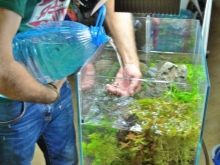
Spotted catfish, like other synodontis, is an omnivorous fishTherefore, you can feed the fish with live insects, small fish, dry bloodworms, daphnia and gimmarus, pre-scalded flakes of Hercules, pieces of dandelion leaves, lettuce, cucumber and zucchini. The main thing is that a variety of ingredients are present on the menu daily. But the lion's share of the diet is live food, and less than half is plant food, dry and frozen foods.
Serving size is determined by whether the fish can swallow the proposed food for 3 minutes. Feeding takes place once a day 2-3 hours before sunset.
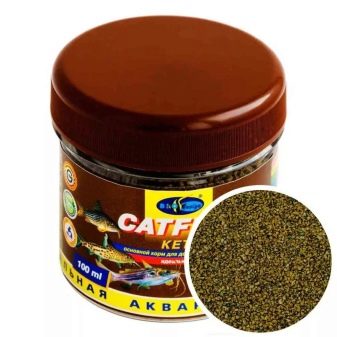
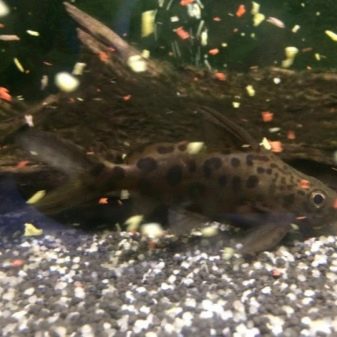
Who can I combine with?
Speaking of compatibility with other fish, based on the experience of aquarists with experience, it is best to get along with species such as lalius, aulonocara, Jackson haplochromis, rainbow fish - melanotenia, angelfish and cichlid Mbuna - relatives of catfishes in native African lakes. Synodontis is considered a peace-loving, fairly intelligent and contact fish. Owners of catfish, who have been living near a person for a long time, can pet their pets on the tummy, often notice an attentive look directed at themselves when they are going to feed their wards. However, if a fish has settled in the aquarium, leading the same lifestyle as catfish, then it’s not far from the conflict. Therefore, it is worth carefully choosing neighbors for such an unusual and cute predator.
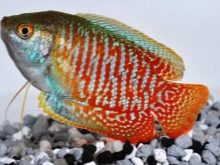
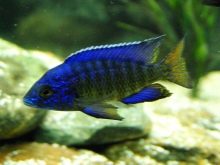
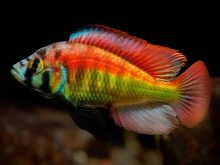
On the contents of the catfish-changeling, see below.










